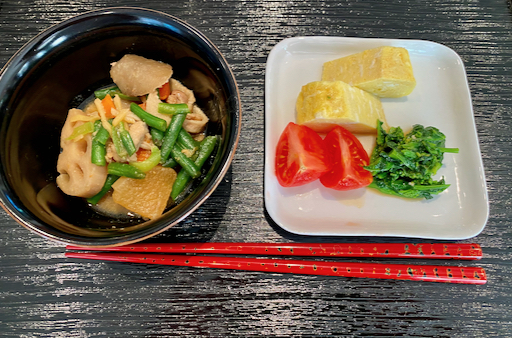My wife found 4 frozen good-sized shell-on shrimp from Great Alaska Seafood, lonely and tucked hidden under a number of other items in the freezer door shelf. She asked me if I could make something with them. I am familiar with popular Japanese shrimp dishes called “Ebi-chiri*” エビチリ and “Ebi-mayo*” エビマヨ. (Japanese are very fond of two condiments; ketchup and mayonnaise). I got an inspiration from these dishes and made this (slightly) spicy mayo sauce for the shrimp. I also added blanched sugar snaps since I had them.
*Digression Alert: Ebi-chiri was supposedly invented by Chin Kenmin 陳建民 (the father of Iron Chinese Chef Chin Ken-ichi 陳健一) based on a Sichuan dish called 乾焼蝦仁 modified to suit Japanese taste. The origin of “Ebi-mayo” appears less certain but it was based on an American Chinese dish of shrimp with Aurora sauce (mixture of ketchup and mayo) which was improved upon by a Chinese Chef in Yokohama. There are many variations of these two recipes.
This dish was impromptu but it came out rather well for a small appetizer. Despite the fact the frozen shrimp had been abandoned for some time in the freezer door shelf they tasted very nice; no iodine flavor and good firm texture.
Ingredients: (two small servings)4 shrimp (I used 4 shell-on frozen shrimp), thawed under running water, shell removed, brined in cold salted water for 5 minutes, washed in cold running water and patted dry
Olive oil for frying
Sauce (mix the ingredients in a small bowl)
2 tsp mayonnaise
2 tsp Greek (strained) yogurt
1/2 tsp Sriracha or any other hot sauce such as gochujang
Directions:
Lightly salt the shrimp and cook in a pan with olive oil, turning few time for total of 1 minute.
Set aside the shrimp
Add the sauce warm it up and then put back the shrimp, add the sugar snaps
Serve immediately.

















.jpeg)


